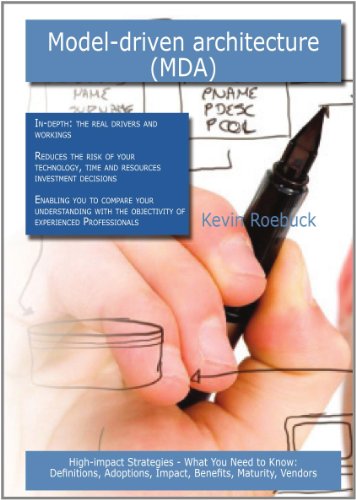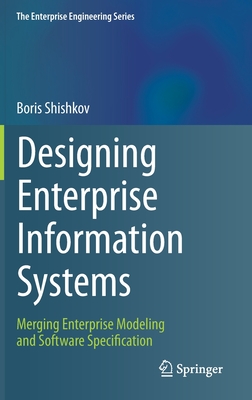Model-Driven Architecture in Practice: A Software Production Environment Based on Conceptual Modeling (Hardcover)
暫譯: 實踐中的模型驅動架構:基於概念建模的軟體生產環境 (精裝版)
Oscar Pastor, Juan Carlos Molina
- 出版商: Springer
- 出版日期: 2007-06-20
- 售價: $2,400
- 貴賓價: 9.5 折 $2,280
- 語言: 英文
- 頁數: 302
- 裝訂: Hardcover
- ISBN: 3540718672
- ISBN-13: 9783540718673
-
相關分類:
Domain-Driven Design
海外代購書籍(需單獨結帳)
買這商品的人也買了...
-
 $525The Complete Guide to Game Audio: For Composers, Musicians, Sound Designers, and Game Developers (Paperback)
$525The Complete Guide to Game Audio: For Composers, Musicians, Sound Designers, and Game Developers (Paperback) -
 Embedded C (Paperback)
Embedded C (Paperback)$900$882 -
 Fundamentals of Multimedia (IE-Paperback)
Fundamentals of Multimedia (IE-Paperback)$1,090$1,068 -
 嵌入式 C 語言 (Embedded C)
嵌入式 C 語言 (Embedded C)$450$356 -
 最新詳解 Javascript & HTML & CSS 語法辭典(增訂新版)
最新詳解 Javascript & HTML & CSS 語法辭典(增訂新版)$490$382 -
 深入淺出 Java 程式設計, 2/e (Head First Java, 2/e)
深入淺出 Java 程式設計, 2/e (Head First Java, 2/e)$880$695 -
 最新 JavaScript 與 Ajax 範例活用辭典
最新 JavaScript 與 Ajax 範例活用辭典$390$304 -
 Silverlight 速學範例 100
Silverlight 速學範例 100$599$473 -
 CSS Layout 達人的階梯
CSS Layout 達人的階梯$520$442 -
 電腦網際網路 (Computer Networking: A Top-Down Approach Featuring The Internet, 3/e)
電腦網際網路 (Computer Networking: A Top-Down Approach Featuring The Internet, 3/e)$600$540 -
 精通 MFC 視窗程式設計─Visual Studio 2005 版
精通 MFC 視窗程式設計─Visual Studio 2005 版$750$593 -
 嵌入式系統─使用 C 和 GNU 開發工具 (Programming Embedded Systems with C and GNU Development Tools, 2/e)
嵌入式系統─使用 C 和 GNU 開發工具 (Programming Embedded Systems with C and GNU Development Tools, 2/e)$680$537 -
 CCNA Official Exam Certification Library (Exam #640-801), 2/e
CCNA Official Exam Certification Library (Exam #640-801), 2/e$2,250$2,138 -
 Effective C++, 3/e (中文版) (Effective C++: 55 Specific Ways to Improve Your Programs and Designs, 3/e)
Effective C++, 3/e (中文版) (Effective C++: 55 Specific Ways to Improve Your Programs and Designs, 3/e)$500$450 -
 PHP for Flash 網站開發手札
PHP for Flash 網站開發手札$620$527 -
 Assembly Language for Intel-Based Computers, 5/e (IE) (美國版ISBN:0132383101)
Assembly Language for Intel-Based Computers, 5/e (IE) (美國版ISBN:0132383101)$1,000$980 -
 鳥哥的 Linux 伺服器架設篇, 2/e & 鳥哥的 Linux 私房菜基礎學習篇, 2/e
鳥哥的 Linux 伺服器架設篇, 2/e & 鳥哥的 Linux 私房菜基礎學習篇, 2/e$1,560$1,326 -
 $399CCNP ISCW Official Exam Certification Guide
$399CCNP ISCW Official Exam Certification Guide -
 Flash 動畫棒棒堂商業範例隨學隨用
Flash 動畫棒棒堂商業範例隨學隨用$680$578 -
 Windows 網路釣魚、側錄、間諜、詐騙、毒駭─Vista /XP 適用
Windows 網路釣魚、側錄、間諜、詐騙、毒駭─Vista /XP 適用$490$417 -
 聖殿祭司的 Silverlight 完美入門
聖殿祭司的 Silverlight 完美入門$540$427 -
 Joomla 架站 123─圖解入門很簡單
Joomla 架站 123─圖解入門很簡單$400$316 -
 JSP 動態網頁實務
JSP 動態網頁實務$480$408 -
 JSP 應用開發詳解
JSP 應用開發詳解$580$458 -
 Ruby Cookbook 錦囊妙技 (Ruby Cookbook)
Ruby Cookbook 錦囊妙技 (Ruby Cookbook)$1,200$948
相關主題
商品描述
Description
Formal specification languages, object-oriented methods, CASE tools, component-based software production, agent-oriented, aspect-oriented ... During the last two decades many techniques have been proposed from both research and industry in order to generate a correct software product from a higher-level system specification. Nevertheless, the many failures in achieving this goal have resulted in scepticism when facing any new proposal that offers a "press the button, get all the code" strategy. And now the hype around OMG’s MDA has given a new push to these strategies.
Oscar Pastor and Juan Carlos Molina combine a sound theoretical approach based on more than 10 years’ research with industrial strength and practical software development experience. They present a software process based on model transformation technology, thus making the statement "the model is the code" – instead of the common "the code is the model" – finally come true. They clearly explain which conceptual primitives should be present in a system specification, how to use UML to properly represent this subset of basic conceptual constructs, how to identify just those diagrams and modeling constructs that are actually required to create a meaningful conceptual schema, and, finally, how to accomplish the transformation process between the problem space and the solution space.
Their approach is fully supported by commercially available tools, and the subsequent software production process is dramatically more efficient than today’s conventional software development processes, saving many man-days of work. For software developers and architects, project managers, and people responsible for quality assurance, this book introduces all the relevant information required to understand and put MDA into industrial practice.
商品描述(中文翻譯)
**描述**
正式規範語言、物件導向方法、CASE 工具、基於元件的軟體生產、代理導向、切面導向……在過去的二十年中,許多技術從研究和產業中被提出,以便從高階系統規範生成正確的軟體產品。然而,許多未能實現這一目標的失敗使得人們對任何提供「按下按鈕,獲得所有代碼」策略的新提案產生懷疑。而現在,OMG 的 MDA 相關的炒作為這些策略帶來了新的推動。
Oscar Pastor 和 Juan Carlos Molina 結合了超過十年的研究基礎的理論方法與工業強度和實際軟體開發經驗。他們提出了一種基於模型轉換技術的軟體過程,從而使「模型就是代碼」的說法——而不是常見的「代碼就是模型」——最終成為現實。他們清楚地解釋了系統規範中應該包含哪些概念原始元素,如何使用 UML 正確表示這一基本概念構造的子集,如何識別實際上需要的那些圖表和建模構造,以創建有意義的概念架構,最後,如何完成問題空間與解決方案空間之間的轉換過程。
他們的方法完全得到商業可用工具的支持,隨後的軟體生產過程比當今的傳統軟體開發過程高效得多,節省了許多工時。對於軟體開發人員和架構師、專案經理以及負責品質保證的人員來說,本書介紹了理解並將 MDA 實踐於工業中的所有相關資訊。












